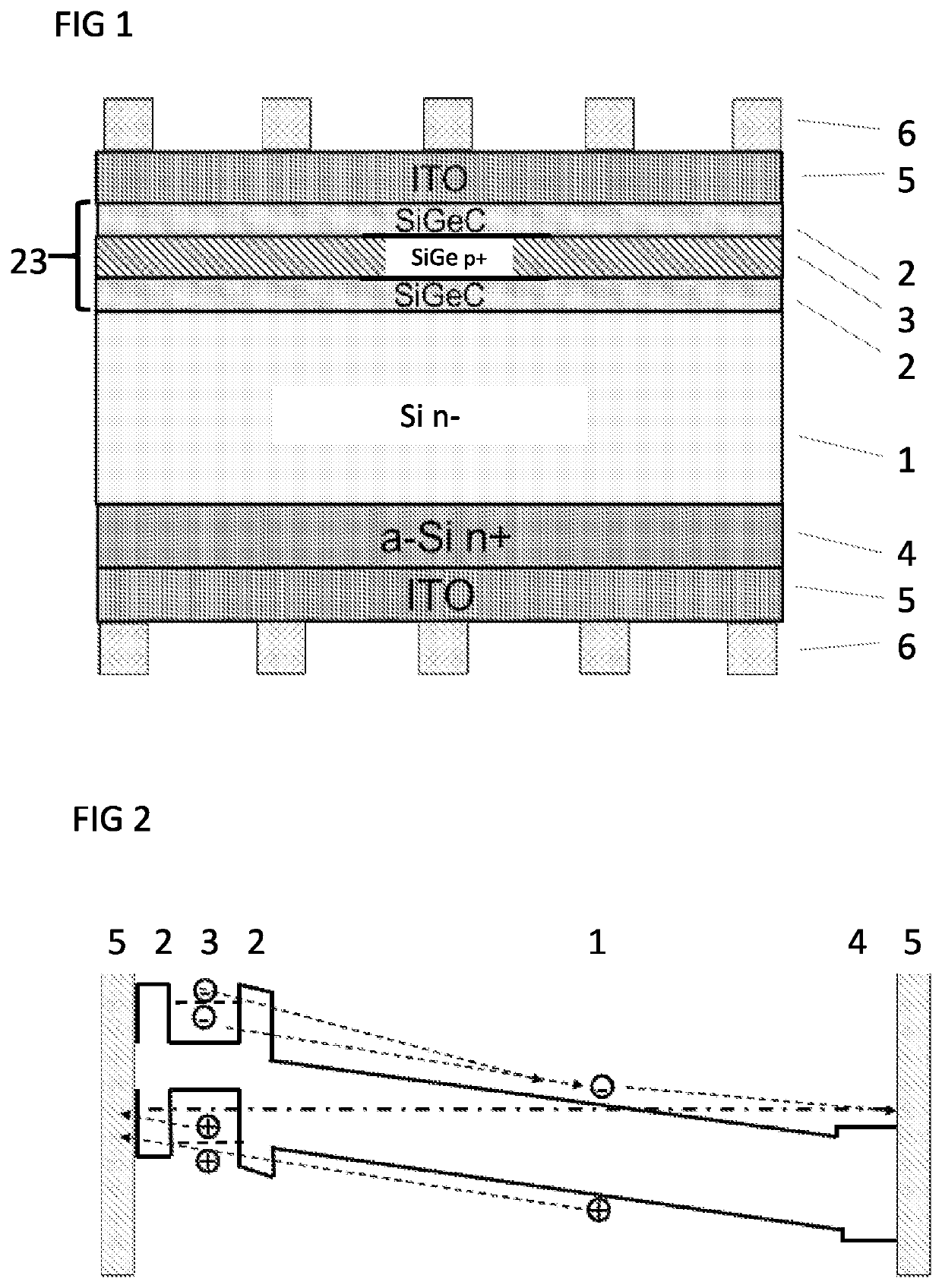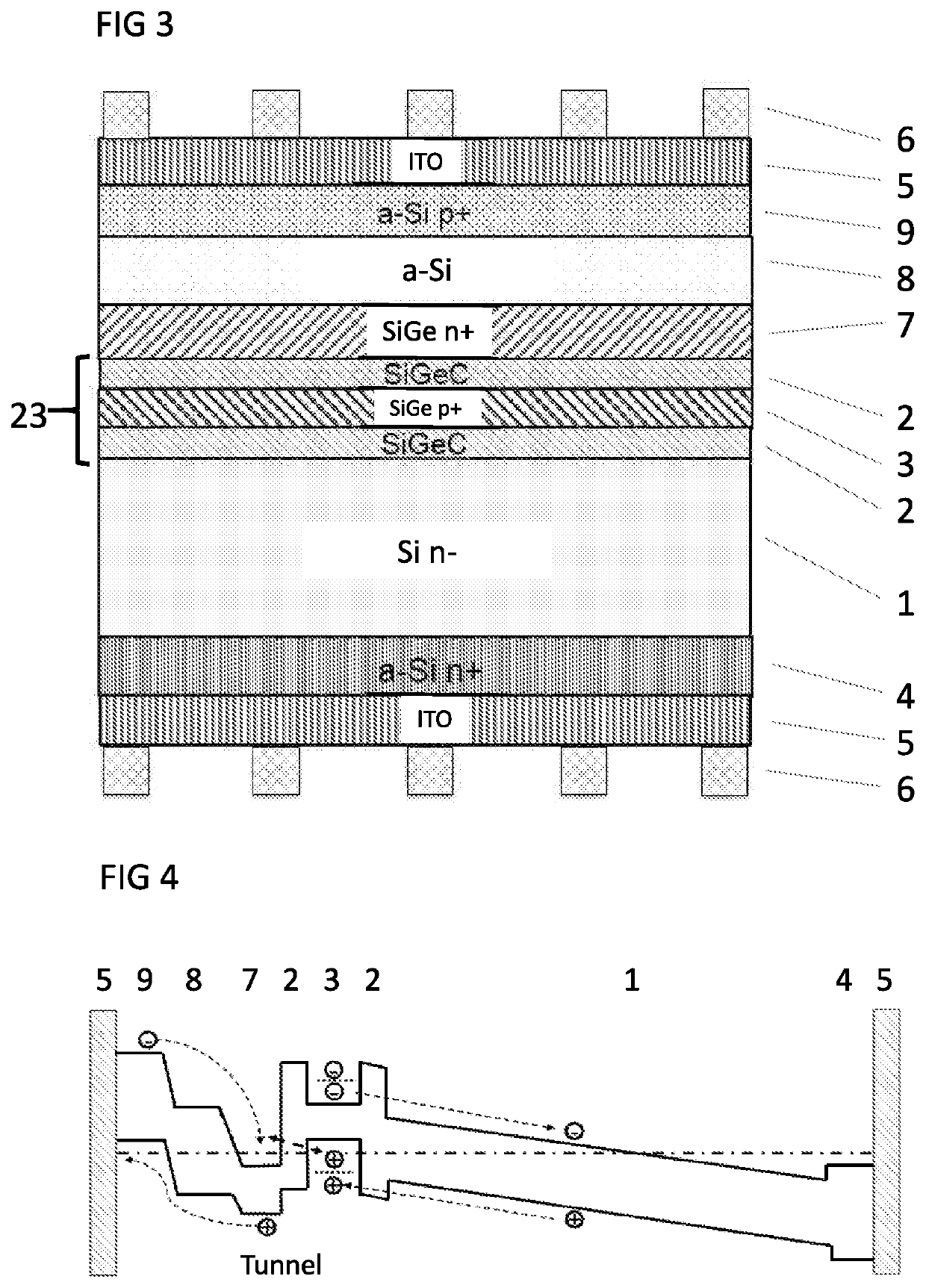Semiconductor Component Having a Highly Doped Quantum Structure Emitter
a quantum structure and component technology, applied in the field of solar cells, can solve the problem of not being able to solve the problem of reducing tk, and achieve the effect of reducing temperature coefficient and high efficiency
- Summary
- Abstract
- Description
- Claims
- Application Information
AI Technical Summary
Benefits of technology
Problems solved by technology
Method used
Image
Examples
Embodiment Construction
[0036]FIGS. 1 and 2 show an example of a semiconductor component 10 in the form of a single-stage solar cell with a highly doped emitter made of a SiGe quantum structure. In this case, FIG. 1 describes the layer structure and FIG. 2 describes the electrical band structure.
[0037]Starting from a low-doped 1-2 Ω-cm n-type PV wafer 1, a quantum structure emitter 23 consisting of a triple layer 2, 3, 2 is located on a top side. The two outer layers 2 are each a layer of SiC, GeC or SiGeC. These layers 2 are distinguished above all in that they have a significantly higher band gap than Si. In the case of Si, the band gap is approximately 1.1 eV, whereas the band gap of the layers 2, as shown in FIG. 2, is typically between 2 eV and 3.4 eV.
[0038]It is also possible for these layers 2 to be formed, for example, of SiO2 or Al2O3 in order to form so-called tunnel barriers. This function also determines the thickness of the layers 2, which is particularly preferably less than 10 nm, in order t...
PUM
| Property | Measurement | Unit |
|---|---|---|
| band gap | aaaaa | aaaaa |
| band gap | aaaaa | aaaaa |
| thickness | aaaaa | aaaaa |
Abstract
Description
Claims
Application Information
 Login to View More
Login to View More - R&D
- Intellectual Property
- Life Sciences
- Materials
- Tech Scout
- Unparalleled Data Quality
- Higher Quality Content
- 60% Fewer Hallucinations
Browse by: Latest US Patents, China's latest patents, Technical Efficacy Thesaurus, Application Domain, Technology Topic, Popular Technical Reports.
© 2025 PatSnap. All rights reserved.Legal|Privacy policy|Modern Slavery Act Transparency Statement|Sitemap|About US| Contact US: help@patsnap.com


